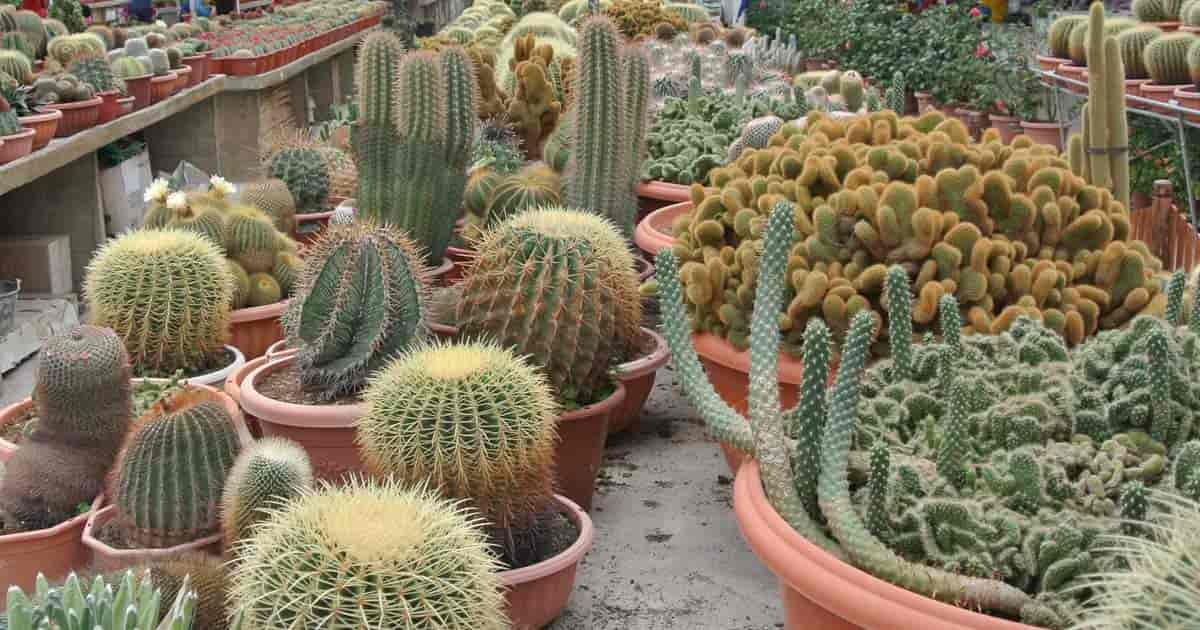Cacti are a plant species belonging to the Cactaceae family and native to dry and arid environments around the world.
They are some of the most striking and unique plants coming in all shapes and sizes.

While some species can grow more than 15’ feet tall, others can’t grow more than a few centimeters above the ground.
Some grow only in deserts, while others thrive when grown in pots as indoor houseplants.
Cactus plants are some of the hardiest, most resilient species making them low-maintenance and water-wise plants.
They can store water to keep the plant plump and succulent in dry climates.
But the spiny bulbous cacti need occasional fertilization.
This helps the plant replenish nutrients they use from the soil throughout the season.
Yes, cactus need fertilizer! The right kind of fertilizer fed the right way and at the right time helps the plant thrive.
Fertilizing while in active growth stages encourages healthy growth, bright color, and flowering in species that have the capability.
Best Fertilizer To Feed Cactus Plants
Cacti are not heavy feeders; hence, not requiring a lot of fertilizers. They respond well when fertilizers are applied at a quarter or half strength.
Strong fertilizers, especially high-nitrogen blends, may cause problems. Most cacti and succulents don’t need a specific blend.
They grow healthy and happy when fed with a highly diluted all-purpose fertilizer.

However, with a low-nitrogen content, water-soluble fertilizer is best suited for the job.
Use a 5-10-10 blend or 10-10-10 fertilizer diluted to 1/4th strength.
Combine this by alternating the 5-10-10 blend with a 1-7-6 cactus blend fertilizer.
This will maintain a consistent amount of nutrients in the cactus soil.
The fertilizer brand Dr. Earth produces an all-purpose fertilizer called “Life.”
It has an NPK (Nitrogen, Phosphorus, and Potassium) of 5-5-5.
Garden centers use it for most plants, including cacti and succulent plants.
But they dilute the formula before using it.
The same brand makes a formula more suited to cacti and succulent fertilizer needs.
The “Root Zone” fertilizer has an NPK of 2-4-2, which produces excellent results.
When and How to Fertilize Cacti Species
How To Fertilize A Cactus
One important thing to remember when fertilizing cacti or succulent plants is to use it sparingly when growing plants.
Too much fertilizer fed too often may lead to poor root growth and slow development. Some growers use fish emulsion to fertilize succulents or manure tea applications.

If you’re using a 5-10-10 or 10-10-10 NPK fertilizer blend, dissolve a tablespoon of fertilizer in one gallon of water.
Use the mixture to water the cacti until the soil is moist.
Be careful about overwatering as it may negatively affect the cactus or succulent.
Alternatively, feed the cactus with a slow-release fertilizer or a 1-7-6 cactus blend.
Use one teaspoon of the 1-7-6 cactus food blend and mix it with one gallon of water.
Use the mixture to water the cactus.
You use the liquid fertilizer mix in a watering can and store the rest in a sealed and labeled container.
Allow it to sink in properly when you water the cacti with the potting mix.
Pour slowly, letting the water absorb and the excess run out of the pots’ drainage holes.
Check if the topsoil is dry before watering again.
When To Fertilize Cacti
The general rule of thumb for knowing when to feed cacti is just before the growing season or at the very beginning.
This is usually between mid and late spring and summer for some species.
This is when most cactus species like the Christmas cactus wake up from dormancy.
They trigger new growth during this season as well.
For cacti and succulents that grow in winter, fertilize in late fall.

Using succulent plant food once a year is sufficient when plants actively grow.
If the potting soil mix used for terrariums and indoor succulents is poor, fertilize again in 2-3 months.
As for the timing, using an organic fertilizer is not critical.
The nutrients in the fertilizer mix in the soil.
The cactus soaks up the nutrients over time, as they need them.
Some gardeners use cactus fertilizer when transplanting potted cacti, as it produces good results.
Important:
Be careful with cacti in the summer growing seasons if chemical fertilizers are used.
Do not feed the plants just before or when they are deep in dormancy during winter.
Also, applying too much fertilizer may cause more harm than good.
It may cause them to burn or even die.
A high amount of NPK and chemical fertilizers are too potent and overwhelm the plant.
This is why most gardening and cactus specialists will tell you to dilute fertilizers by half or 1/4th.
Start slow, and add later on if you don’t see any results.
You will have no trouble growing healthy cacti and succulents by following proper feeding methods and providing good growing conditions.